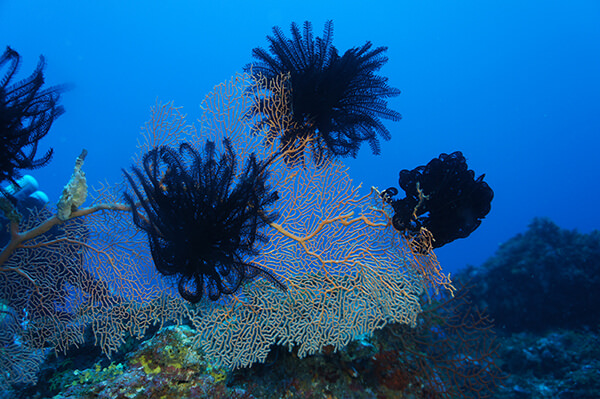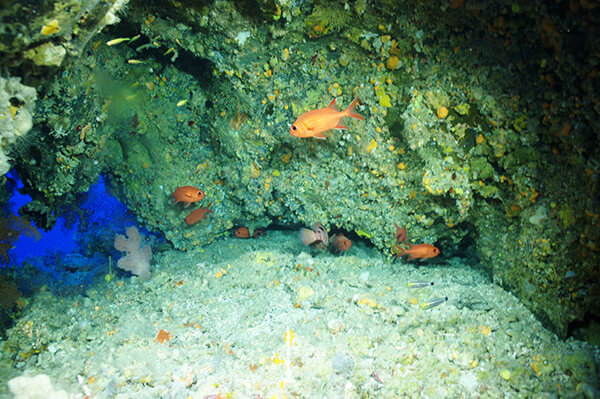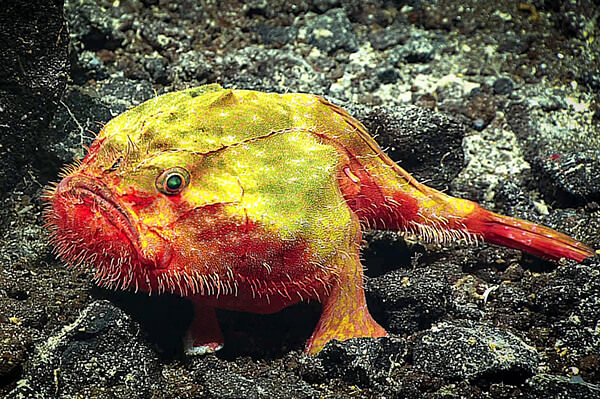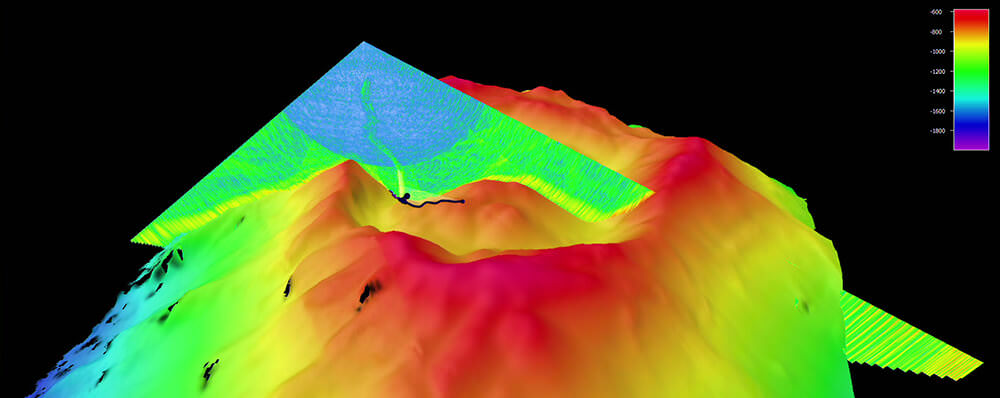Deep-sea exploration


Mesophotic ecosystems
Between 100 and 500 feet below the ocean’s surface are mesophotic or “twilight” reefs. At these depths, only a little light can penetrate the water column, so the makeup of corals, sponges, and algae in these communities may be different from shallower coral reefs.
Very little is known about these ecosystems because the upper limit of mesophotic reefs coincides with the diving limit for conventional scuba diving. However, recent technological advances in rebreather technology. have made it possible to explore these unique ecosystems.
In February 2017, as a collaborative effort with National Marine Sanctuary of American Samoa, rebreather divers from Papahānaumokuākea Marine National Monument, the National Centers for Coastal Ocean Science, and the Bishop Museum of Hawai‘i conducted fish and coral surveys at depths ranging from 250 to 330 feet, documenting a wide variety of species. They collected 104 specimen samples of black corals and gorgonian corals, and recorded 118 different species of fish. At the time of discovery, many of these observations were likely new to science.
Because they share common species and are often adjacent to shallow coral ecosystems, mesophotic coral ecosystems may serve as extensions of shallow coral reefs. It has been hypothesized that mesophotic coral ecosystems may serve as potential sources to reseed or replenish degraded shallow-water coral reefs. Mesophotic coral ecosystems may also serve as essential fish habitat for economically- and ecologically-important species.


Exploring the depths of the ocean

Deeper than these mesophotic reefs, at 500 feet and below, the deep sea begins. No light penetrates these deep depths, but even in this pitch black environment life thrives. In February 2017, the NOAA Ship Okeanos Explorer visited American Samoa and conducted deep-sea surveys using a remotely operated vehicle (also known as an ROV). They explored unknown deep-sea ridges and seamounts and discovered and documented a wide variety of organisms, many new to science.
On July 2019, another deep-sea expedition took place in sanctuary waters surrounding American Samoa in collaboration with the E/V Nautilus and the Ocean Exploration Trust. Researchers acquired baseline information on deep-sea and mesophotic habitat in American Samoa, conducted benthic transect surveys and photogrammetry, and explored seamounts.
Seamounts are formed by volcanic processes that create a mountain on the seafloor. They can reach close to the water surface or be thousands of feet deep. Located in National Marine Sanctuary of American Samoa are two seamounts: Vailulu`u and Malulu.
Vailulu`u Seamount is located in between Manu`a and Rose Atoll and is the only hydrothermally active seamount within the American Samoa EEZ. Discovered in 1975 and first mapped in 1999, Vailulu`u is the active volcanic hotspot that created the Samoan archipelago. It is very large, ranging from 2,000 feet to 16,000 feet in depth. The caldera has risen and collapsed repeatedly over time, and currently sits at about 2,300 feet. Between 2001 and 2005 it built a new cone in the middle, named Nafanua. Researchers have estimated that if activity continues at that rate, it could breach the surface within decades, forming a new island in the Samoan island chain. The E/V Nautilus explored the Vailulu`u Seamount in July 2019 and found a new hydrothermal vent signifying that it is still active.

